PRESTO PLANS
Sent straight to your inbox
CLICK HERE TO ACCESS
Sign up to receive 10 ready-to-use ELA resources your students will love!
10 FREE ELA RESOURCES
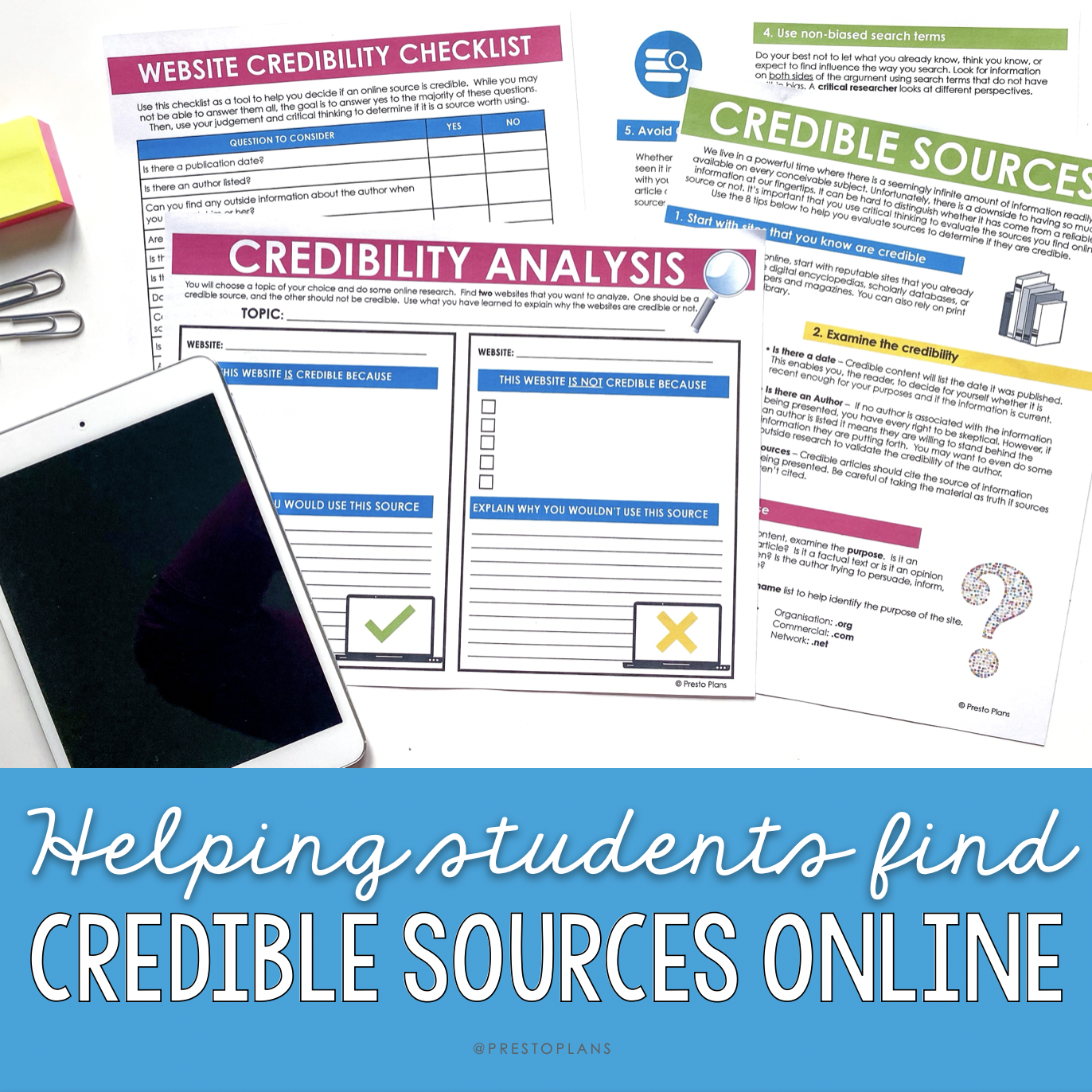
Helping Students Find Credible Source in Online Research
Have you noticed that your middle and high school students are glued to their phones? We live in an age of information, which means that media literacy is a more important skill for young people to practice than ever before. Helping students find credible sources and evaluate what makes a source trustworthy can prevent misinformation, and strengthen research skills in all subject areas.
As ELA teachers, I believe we have an important role to play in helping students assess the credibility of sources and develop media literacy skills. This also includes teaching the steps students can take to avoid bias and confirm whether or not the information they find online is reliable.
If you’re wondering how to begin, here are my favorite lesson ideas and resources for helping middle school students find credible sources.
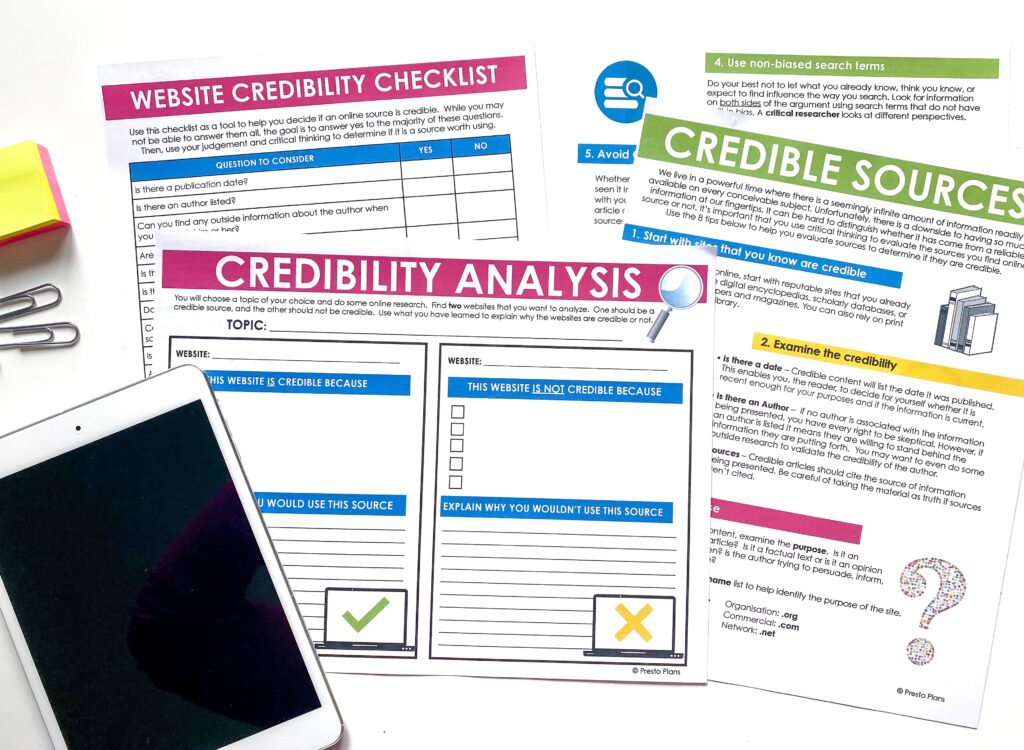
Spaghetti Harvest
I like to begin my lesson on how to find credible sources by sharing a video of an old BBC April Fool’s prank. The “Spaghetti Harvest” mini-documentary, which first aired in the late 1950s, is widely believed to be one of the first April Fool’s jokes ever broadcast on television. In the video, which appears to be a news clip narrated by a reputable journalist of the time, “spaghetti farmers” in Switzerland are shown “harvesting” the annual crop of spaghetti from bushes in a field.
While the concept is very silly, there are lots of things about the video that appear to be legitimate, including images of Swiss families sitting down together to share a meal of “freshly-picked” spaghetti! I think this video is the perfect springboard to discuss the importance of finding credible sources with students. In addition to asking students what they found believable (and unbelievable) about the “spaghetti harvest,” I also find it useful to have them see if they can pinpoint the moment where they began to realize it wasn’t true.
Age of Information
From here, I like to share some details about the age of information we live in. Of course, this includes the downsides of having access to too much information! Using the prepared slides as a guide, I explain that we are just a few keystrokes away from all sorts of knowledge that we might look for – everything from skateboarding tricks to training a puppy! But with so much information out there, it can be tricky for students to know how to find credible sources. The long and the short of it is that sometimes, we don’t know what to believe!
With this in mind, it’s useful to caution students about falling into the trap of misinformation or taking everything they read online at face value! However, with a combination of critical thinking skills and an understanding of legitimate websites, helping students find credible sources is possible!
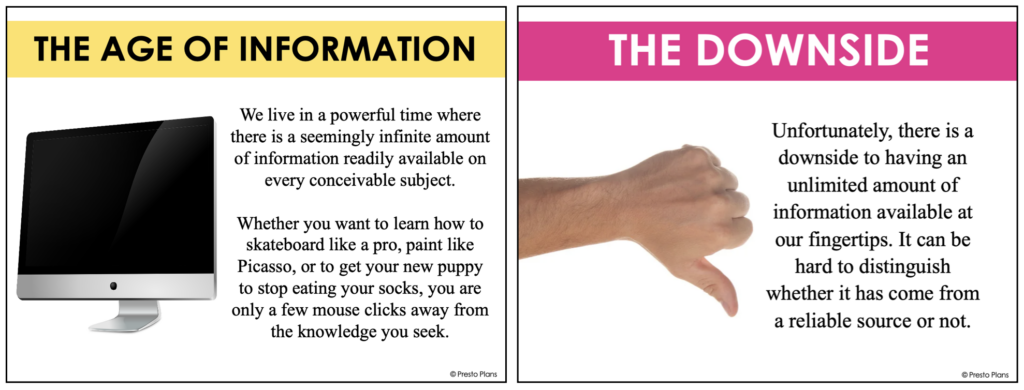
Where to Find Credible Sources
It can be helpful to share a few legitimate sources of information with students, so they always have a baseline of where to start a search! I like referring to digital encyclopedias (and if your school library has a set of physical encyclopedias, this can also be a great place to start!), like the Encyclopedia Britannica. Supporting students as they navigate online newspapers like the New York Times or databases of scholarly, peer-reviewed journals can also start them off on the right track.
Tips & Tricks
This is also a great time to share some quick tips and tricks for helping students find credible sources and evaluate the legitimacy of information. Here are some ideas I like to expand on in my lesson:
- 1) Examine the credibility: Checking for publication dates and the author’s qualifications can give valuable clues to a source’s legitimacy.
- 2) Examine the purpose: Why is the information being shared, and who is sharing it? If the information is being shared by a brand, for example, it might be more biased than if the source is a government website.
- 3) Use non-biased search terms: Sometimes the trick lies in knowing what to search for! When researching an argument, I like to encourage students to consider multiple perspectives, rather than search for information that confirms or rejects a particular point of view.
- 4) Avoid clickbait (emotionally manipulative sources): Students may not be familiar with the word “clickbait” – but they have definitely seen it in action! Here, I remind students to resist the lure of emotional headlines or manipulative language.
- 5) Look at writing style: A key skill for students to develop is how to find and evaluate credible sources – and one major clue lies in the style of writing. When websites lack attention to detail (spelling and grammar errors, or sloppy presentation), this can be a sign they are not legitimate.
I also talk about other important tips like confirming findings and evaluating website design. I cover each of these in more detail using the ready-to-use lesson.
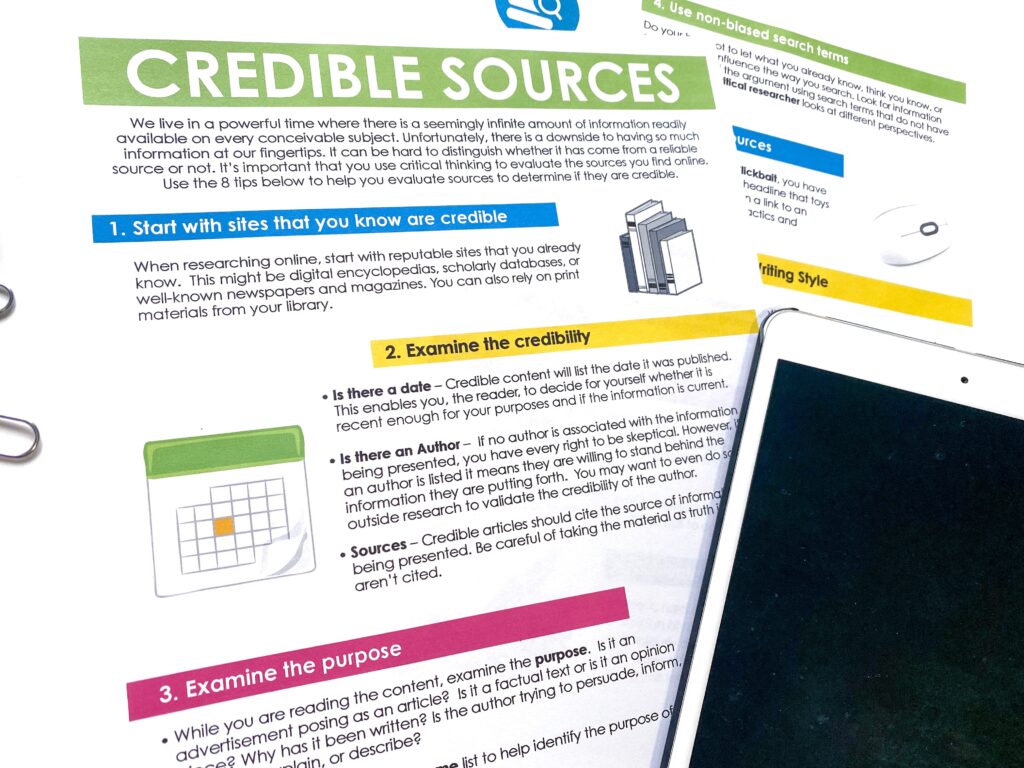
Credibility Analysis Activity
After the lesson on how to find credible sources, it’s time for students to put their new knowledge into practice! In the Credbility Analysis activity, students can work alone, in pairs, or in small groups, to carry out some online research.
First, students need to select a topic and find two websites that provide information on their subject of choice. Ideally, one should be a credible source, while the other may be less credible. Using a graphic organizer, students pinpoint specific reasons why they know the website may or may not be trustworthy.
To wrap up, they can explain, using specific evidence, why they would (or would not!) use this source in researching their chosen topic.
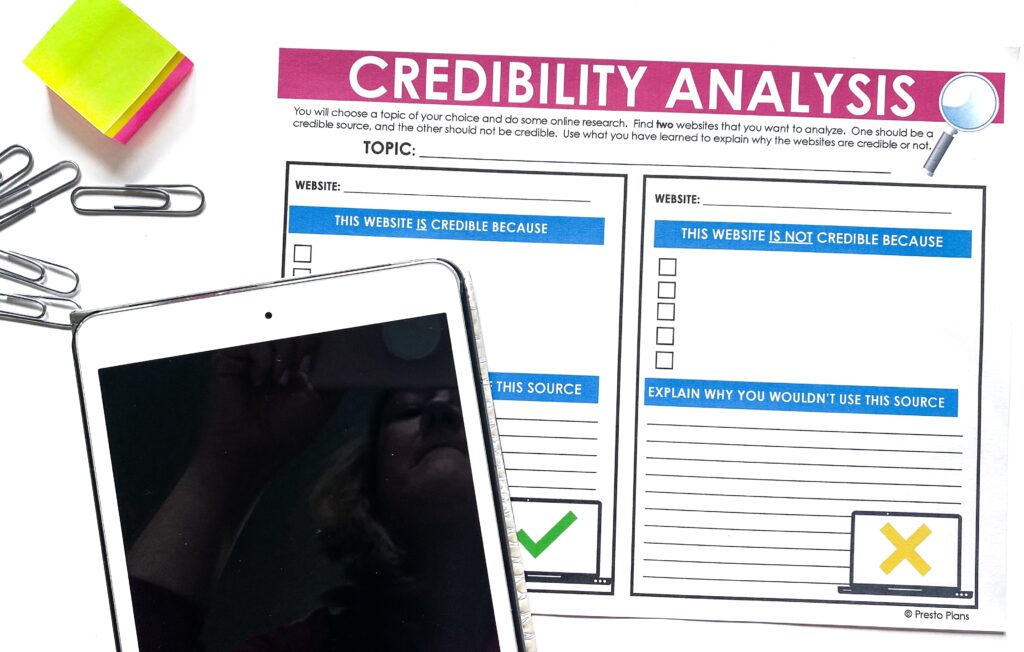
Credibility Checklist
Helping students find credible sources online goes beyond a standalone lesson! Throughout the year, you may wish to return to the idea of assessing and evaluating the legitimacy of online information. With this in mind, one tool I find really effective is a Credibility Checklist, which students can use as a helpful guide to evaluating sources. You might like to post a copy of the checklist for reference in your classroom, or provide a copy to each student so they can continue to refer to it when carrying out various research tasks.
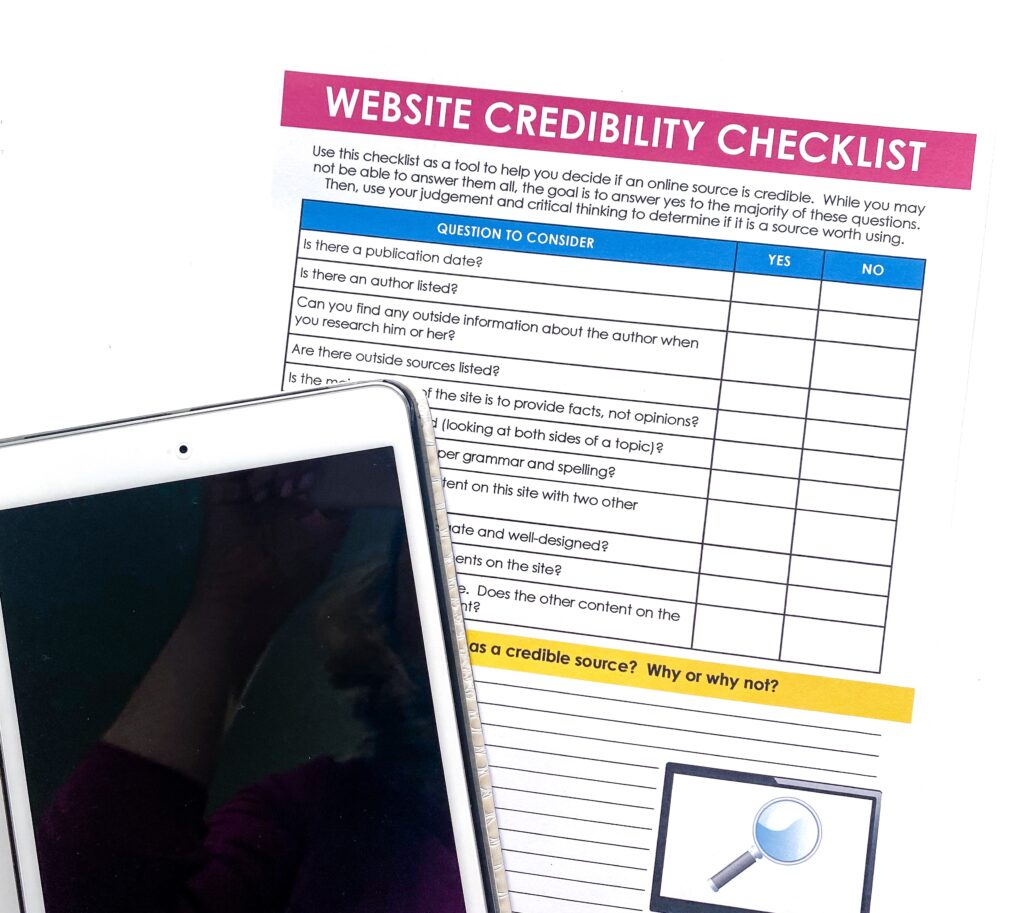
There you go! I hope this has gives you plenty of tools to support your students in evaluating sources and carrying out research! Click below to grab the ready-to-use resource for your classroom:
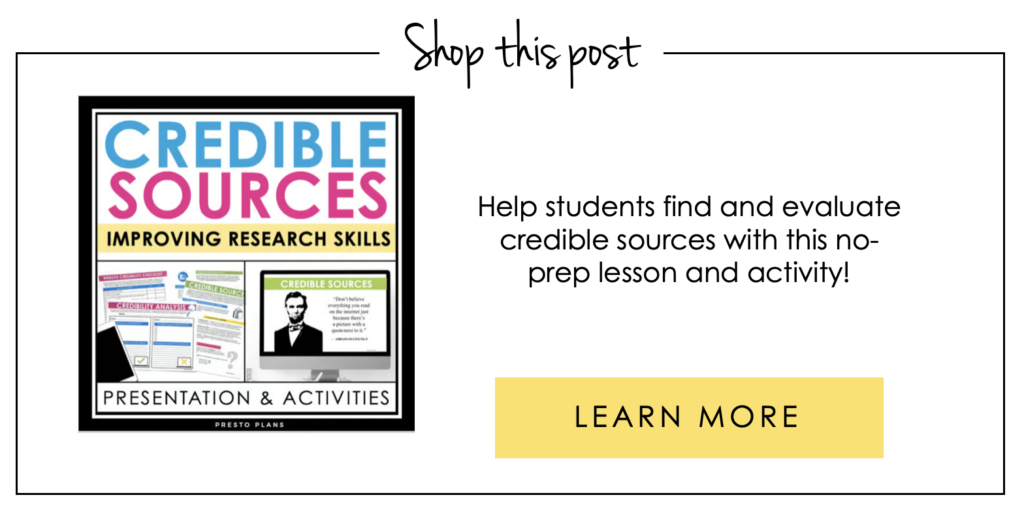
For more strategies to support student learning in all subjects, read my post on 6 Creative Ways to Help Your Students Develop a Growth Mindset.
Search the blog for what you are teaching
GIVEAWAYS
sent straight to your inbox!
share this post